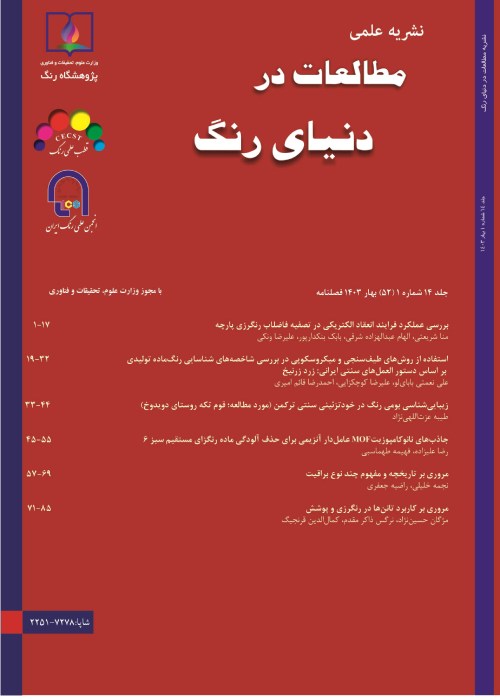Ceramic Membranes and Their Application in Treatment of Dye Containing Wastewaters
Author(s):
Article Type:
Research/Original Article (ترویجی)
Abstract:
Dyes are used in a number of industries such as printing, textile, paper, leather, and plastic manufacturing. Large amounts of dyes are discharged from industries as wastewater. The toxicity of dye effluents threatens human beings and other living organisms. In general, dye containing wastewaters are treated by a number of different physical, chemical, and biological methods. Physical treatments are classified into membrane separation, conventional coagulation/flocculation and adsorption. In various industries, water and chemicals including inorganic salts (NaCl, Na2SO4) are used in dying process that generate large volumes of strongly colored wastewaters with high load of toxic organic and inorganic compounds. Therefore, the recovery of dye and salt from industrial wastewater has a great significance. Membrane processes can separate and recycle both dyes and inorganic salts with considerably high efficiencies, while in other techniques; primary resources are not sufficiently recycled from industrial wastewater. Ceramic membranes are comparable to polymer membranes based on their characteristics such as easy control of the pore size, higher durability, thermal and chemical resistance, mechanical strength, extended lifetime. Nanofilteration (NF) is applied to remove dyes that are usually in the form of composites and composed of one or more several layers with different ceramic materials. Ceramic membranes generally have a macroporous support, one or two mesoporous intermediate layers and a microporous top layer. Ceramic supports are formed by shaping a powder and then consolidating by sintering. There exist a number of methods for fabrication of ceramic supports such as extrusion, tape casting, slip casting and press. The sol-gel process is the most appropriate methods for the preparation of intermediate and top layer. The process of separating salt from dye solution by NF needs a high dye rejection and a low salt rejection. The purpose of this paper is to review the fabrication techniques of ceramic membranes and their applications in treatment of dye-containing wastewaters.
Keywords:
Language:
Persian
Published:
Journal of studies in color world, Volume:8 Issue: 3, 2018
Pages:
71 to 88
magiran.com/p1916060
دانلود و مطالعه متن این مقاله با یکی از روشهای زیر امکان پذیر است:
اشتراک شخصی
با عضویت و پرداخت آنلاین حق اشتراک یکساله به مبلغ 1,390,000ريال میتوانید 70 عنوان مطلب دانلود کنید!
اشتراک سازمانی
به کتابخانه دانشگاه یا محل کار خود پیشنهاد کنید تا اشتراک سازمانی این پایگاه را برای دسترسی نامحدود همه کاربران به متن مطالب تهیه نمایند!
توجه!
- حق عضویت دریافتی صرف حمایت از نشریات عضو و نگهداری، تکمیل و توسعه مگیران میشود.
- پرداخت حق اشتراک و دانلود مقالات اجازه بازنشر آن در سایر رسانههای چاپی و دیجیتال را به کاربر نمیدهد.
دسترسی سراسری کاربران دانشگاه پیام نور!
اعضای هیئت علمی و دانشجویان دانشگاه پیام نور در سراسر کشور، در صورت ثبت نام با ایمیل دانشگاهی، تا پایان فروردین ماه 1403 به مقالات سایت دسترسی خواهند داشت!
In order to view content subscription is required
Personal subscription
Subscribe magiran.com for 70 € euros via PayPal and download 70 articles during a year.
Organization subscription
Please contact us to subscribe your university or library for unlimited access!


